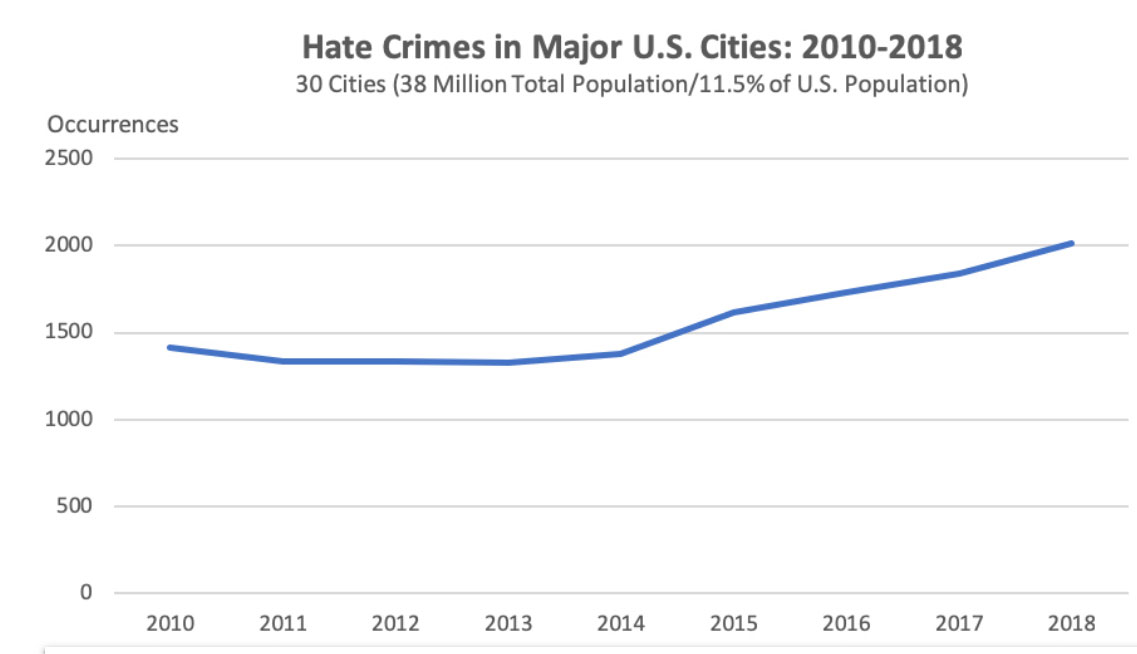Robbery
- Definition: The taking or attempting to take anything of value from the care, custody or control of a person or persons by force or threat of force or violence and/or putting the victim in fear.
- Example: Two students returning to campus from a night at a local bar are approached by three armed men on a city sidewalk outside their residence hall and told to hand over their wallets. The students comply and the three armed men leave without harming the students.
- Definition: The theft or attempted theft of a motor vehicle, which is defined as self-propelled and runs no the surface and not on rails. Motorboats, construction equipment, airplanes and farming equipment are specifically excluded from this category.
- Example: A faculty member’s car is reported stolen from a campus parking garage and is later recovered a block off campus.
Sex Offenses
The Clery Act includes four defined sex offenses for which crime statistics must be collected on Clery geography.
- Rape
- Definition: The penetration, no matter how slight, of the vagina or anus with any body part or object, or oral penetration by a sex organ of another person, without the consent of the victim.
- Example: A female student reports to the campus police that she was raped in her car in a parking lot on her school’s campus by students from another college.
- Fondling
- Definition: The touching of the private body parts of another person for the purpose of sexual gratification, without the consent of the victim, including instances where the victim is incapable of giving consent because of his/her age and/or because of his/her temporary or permanent mental incapacity.
- Example: A male student reports that another male student fondled him in a campus building while telling him that he was glad they could finally be alone.
- Statutory rape
- Definition: Non-forcible sexual intercourse with a person who is under the statutory age of consent.
- Example: A 21-year-old student has sex with a 15-year-old juvenile in the student’s on-campus apartment. There is no use of force or threat of force.
- Incest
- Definition: Non-forcible sexual intercourse between persons who are related to each other within the degrees wherein marriage is prohibited by law.
- Example: A 20-year-old student has sex with her 25-year-old brother in her on-campus apartment. (article continues below)
Bryan Franke, founder of 2C Solutions and a police detective in the cyber crimes unit, discusses the significance of technology-based evidence in sexual violence investigations and how it can turn a case around.
Arrests and Referrals for Disciplinary Action
The Clery Act requires institutions to collect statistics for violations of state law and/or ordinances for drug, alcohol and weapons violations. These violations can result in an arrest or disciplinary action.
- Liquor Law Violations
- Definition: The violation of laws or ordinances prohibiting: the manufacture, sale, transporting, furnishing, possessing , etc., of intoxicating liquor; maintaining unlawful drinking places; bootlegging; operating a still; furnishing liquor to a minor or intemperate person; underage possession; using a vehicle for illegal transportation of liquor; drinking on a train or public conveyance; and all attempts to commit any of the aforementioned. Drunkenness and driving under the influence are not included.
- Example: In an on-campus student housing facility room, three underage students and a non-student are found drinking alcohol in violation of state law.
- Weapons Possession
- Definition: The violation of laws or ordinances dealing with weapon offenses, regulatory in nature, such as: manufacture, sale, or possession of deadly weapons; carrying deadly weapons, concealed or openly; furnishing deadly weapons to minors; aliens possessing deadly weapons; and all attempts to commit any of the aforementioned.
- Example: A student is cited for having a firearm in his or her residence hall room in violation of state law.
- Drug Abuse Violations
- Definition: Violations of state and local laws relating to the unlawful possession, sale, use, growing, manufacturing, and making of narcotic drugs. The relevant substances include opium or cocaine and their derivatives (morphine, heroin, codeine), marijuana, synthetic narcotics (Demerol, methadone) and dangerous non-narcotic drugs (barbiturates, Benzedrine).
- Example: Two non-students are arrested during an on-campus football game for possession of cocaine.
Hate Crimes

A survey conducted by Kevin Grisham and Brian Levin of the Center for the Study of Hate & Extremism-California State University, San Bernardino, found 70% of cities reported an increase in hate crimes from 2017 to 2018 and just under half hit a decade high.
A hate crime is a criminal offense that manifests evidence that the victim was intentionally selected because of the perpetrator’s bias against the victim.
Although there are many possible categories of bias, under the Clery Act, the eight categories that are required to be reported as hate crimes include race, religion, sexual orientation, gender, gender identity, ethnicity, national origin and disability.
The Clery Act requires institutions collect crime statistics for hate crimes associated with either the commission of a primary crime or the lesser offenses of larceny-theft, simple assault, intimidation, destruction of or vandalism of a building or property. The aforementioned lesser offenses are included in Clery Act statistics only if they are hate crimes.
- Larceny-theft
- Definition: The unlawful taking, carrying, leading or riding away of property from the possession or constructive possession of another.
- Example: A student with known anti-gay sentiments steals a number of books by LGBTQ authors from a campus library exhibit. He leaves a note on the exhibit table that reads, “Gay and lesbian books don’t belong in our library.” When he is caught leaving the library with a large bag of books, he starts shouting that LGBTQ students have been getting too much attention on campus and he was tired of it.
- Simple Assault
- Definition: An unlawful physical attack by one person on another when neither the offender displays a weapon, nor the victim suffers obvious severe or aggravated bodily injury involving apparent broken bones, loss of teeth, possible internal injury, severe laceration or loss of consciousness.
- Example: A white student causes a disturbance in an on-campus classroom during a discussion on race relations. The student begins shouting racial epithets while pointing at black students. The instructor calls campus security for assistance. A white security officer and a black security officer arrive. When the black officer tries to subdue the student, the student starts shoving the officer and shouting racial epithets at him.
- Intimidation
- Definition: To unlawfully place another person in reasonable fear of bodily harm through the use of threatening words and/or conduct, but without displaying a weapon or subjecting the victim to an actual attack. This includes cyber-intimidation if the victim is threatened on Clery geography.
- Example: During finals week, a gay faculty member gets a series of phone calls in his non-campus office. When he answers, the caller says that she hates gay people and then hangs up. On the third night, the caller says that the faculty member had better be careful because something terrible was about to happen to gay people at the school. The faculty member is afraid and calls the local police to report the threat.
- Destruction, Damage or Vandalism of Property
- Definition: To willfully or maliciously destroy, damage, deface or otherwise injure real or personal property without the consent of the owner or the person having custody or control of the property.
- Example: The office of the Arab-American Student Center on the third floor of the campus student union contains both Arabic and English writing on the outside of the door. One night, the office is vandalized with anti-Arab threats and disparaging anti-Arab messages.
VAWA Crimes
On March 7, 2013, the Violence Against Women Reauthorization Act of 2013 (VAWA) was signed into law. VAWA includes amendments to the Clery Act, requiring institutions to disclose statistics, policies and programs related to dating violence, domestic violence, sexual assault and stalking, among other changes. (article continues below)
Detective Mark Wynn, of Wynn Consulting, explains the importance of police training when it comes to sexual violence cases and victim care.
- Domestic Violence
- Definition: A felony or misdemeanor crime of violence committed by a current or former spouse or intimate partner of the victim; by a person with whom the victim shares a child in common; by a person who is cohabitating with or has cohabitated with the victim as a spouse or intimate partner; by a person similarly situated to a spouse of the victim under the domestic or family violence laws of the jurisdiction in which the crime of violence occurred; or by any other person against an adult or youth victim who is protected from that person’s acts under the domestic or family violence laws of the jurisdiction in which the crime of violence occurred.
- Example: A student’s wife is waiting for her husband outside of his on-campus classroom building. She attacks her husband with a knife when he exits the building.
- Dating Violence
- Definition: Violence committed by a person who is or has been in a social relationship of a romantic or intimate nature with the victim. The existence of such a relationship shall be determined based on the reporting party’s statement with consideration of the length of the relationship, the type of relationship and the frequency of interaction between the persons involved in the relationship.
- Example: A male student cuts his ex-girlfriend with a knife during an altercation in an on-campus dining hall.
- Stalking
- Definition: Engaging in a course of conduct directed at a specific person that would cause a reasonable person to (1) fear for the person’s safety or the safety of others; or (2) suffer substantial emotional distress. Course of conduct means two or more acts, including, but not limited to, acts in which the stalker directly, indirectly, or through third parties, by any action, method, device, or means follows, monitors, observes, surveils, threatens, or communicates to or about, a person, or interferes with a person’s property.
- Example: A female student reports that she is being followed by a man she met at her job at a café off-campus. He began showing up at the café and would not leave her alone. Since then she has also noticed him following her around campus and she fears for her safety.
Want to test your knowledge on whether or not a crime should be counted as a Clery crime? Take this quiz that is filled with on- and off-campus scenarios — some of which classify as Clery crimes and some of which do not.
Here are some additional useful articles related to Clery Act compliance:
- 5 Steps to Consider When Reviewing the New Clery Act Handbook
- The Clery Act and Campus Safety Are About Heart, Not Just Compliance
- Clery Act Requirements Explained
- How the Clery Act Can Help Colleges Prepare for the Unexpected and Prevent Incidents
- Clery Act Requirements for Study Abroad and Field Trips
- 8 Clery Act Documents Colleges Must Keep




